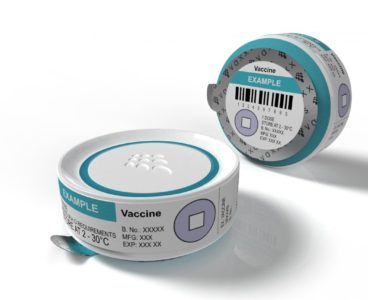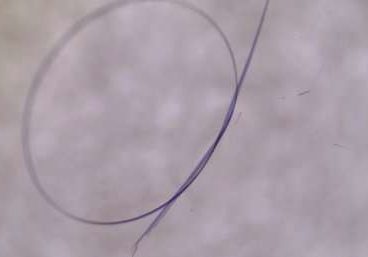
Making Light Work of Quantum Computing
Light may be the missing ingredient in making usable quantum silicon computer chips, according to an international study featuring a University of Queensland researcher. The team has engineered a silicon chip that can guide single particles of light – photons – along optical tracks, encoding and processing quantum-bits of information known as ‘qubits’. Professor Timothy…
Quantum Leap for Einstein’s Scientific Principle
Gold Nanoparticles Used in New Cancer Monitoring Technology
A new blood test using gold nanoparticles could soon give oncologists an early and more accurate prognosis of how cancer treatment is progressing and help guide the ongoing therapy of patients. Researchers at The University of Queensland have developed new nanotechnology to monitor the diversity of individual cancer cells circulating in the body. In close…
General Anesthetics Do More than Put You to Sleep
A new understanding of the complex ways in which general anaesthetics act on the brain could eventually lead to improved drugs for surgery. It remains unclear how general anaesthesia works, even though it is one of the most common medical procedures worldwide. University of Queensland researcher, Associate Professor Bruno van Swinderen, said his team had…
Nanopatch Polio Vaccine Delivers
Efforts to rid the world of polio have taken another significant step, thanks to research led by University of Queensland bioscience experts and funding from the World Health Organisation (WHO). A fresh study of the Nanopatch – a microscopic vaccine delivery platform first developed by UQ researchers – has shown the device more effectively combats…
New Nerve Degeneration Molecule Identified
A discovery in a transparent roundworm has brought scientists one step closer to understanding why nerves degenerate. University of Queensland researchers have identified a key molecule that protects the axons of nerve cells from degenerating. Queensland Brain Institute researcher Associate Professor Massimo Hilliard said axons – long, thread-like nerve cell sections that transmit information – were often…
Bendable Crystals Tie Current Thinking in Knots
Potential Treatment for Brain Cancer as Drug Shrinks Tumors
UQ Leads International Consensus on Antibiotics Testing
Infectious disease experts are pushing for better evidence from clinical trials to help determine the most effective antibiotics to use when treating their sickest patients. A University of Queensland initiative brought together 27 researchers and clinicians from 11 countries, to reach a consensus on measurements when testing drugs for use against bloodstream infections, often referred to as…
Screen-Printed Batteries for Renewables on the Way
Flexible screen-printed batteries may be the way forward for renewable energy thanks to a joint project between The University of Queensland and the University of New South Wales. The technology behind new ultra-thin, energy storage devices was on display today for Minister for Industry, Innovation and Science Senator Arthur Sinodinos. Senator Sinodinos’s visit follows a…
Faster Genome Assembly Battles Antibiotic-Resistant Infections
Researchers from The University of Queensland’s Institute for Molecular Bioscience (IMB) have developed a faster and more accurate method for assembling genomes which could help clinicians rapidly identify antibiotic-resistant infections. IMB Centre for Superbug Solutions Deputy Director Associate Professor Lachlan Coin says arming clinicians with this information could help them prescribe the most effective antibiotic…
Latest Research Offers Hope for Patients With Inflammatory Diseases
University of Queensland researchers have discovered a molecular trigger for inflammation that could lead to new treatments for rheumatoid arthritis, inflammatory bowel disease and neurodegenerative diseases. UQ’s Institute for Molecular Bioscience (IMB) researcher Professor Jennifer Stow said targeting this trigger – a protein called SCIMP, could reduce or ‘switch off’ inflammation. “Inflammation is the body’s way of protecting us…
Purple Bacteria Shine Path to Super-Efficient Light Harvesting
In its billions of years on earth, plant life has become super-efficient at using light – and now it’s showing how it does it. A quantum – minuscule – examination of chlorophyll within certain purple bacteria shows an exceptionally efficient geometric arrangement for light harvesting, say scientists from The University of Queensland and Iran’s Institute…











